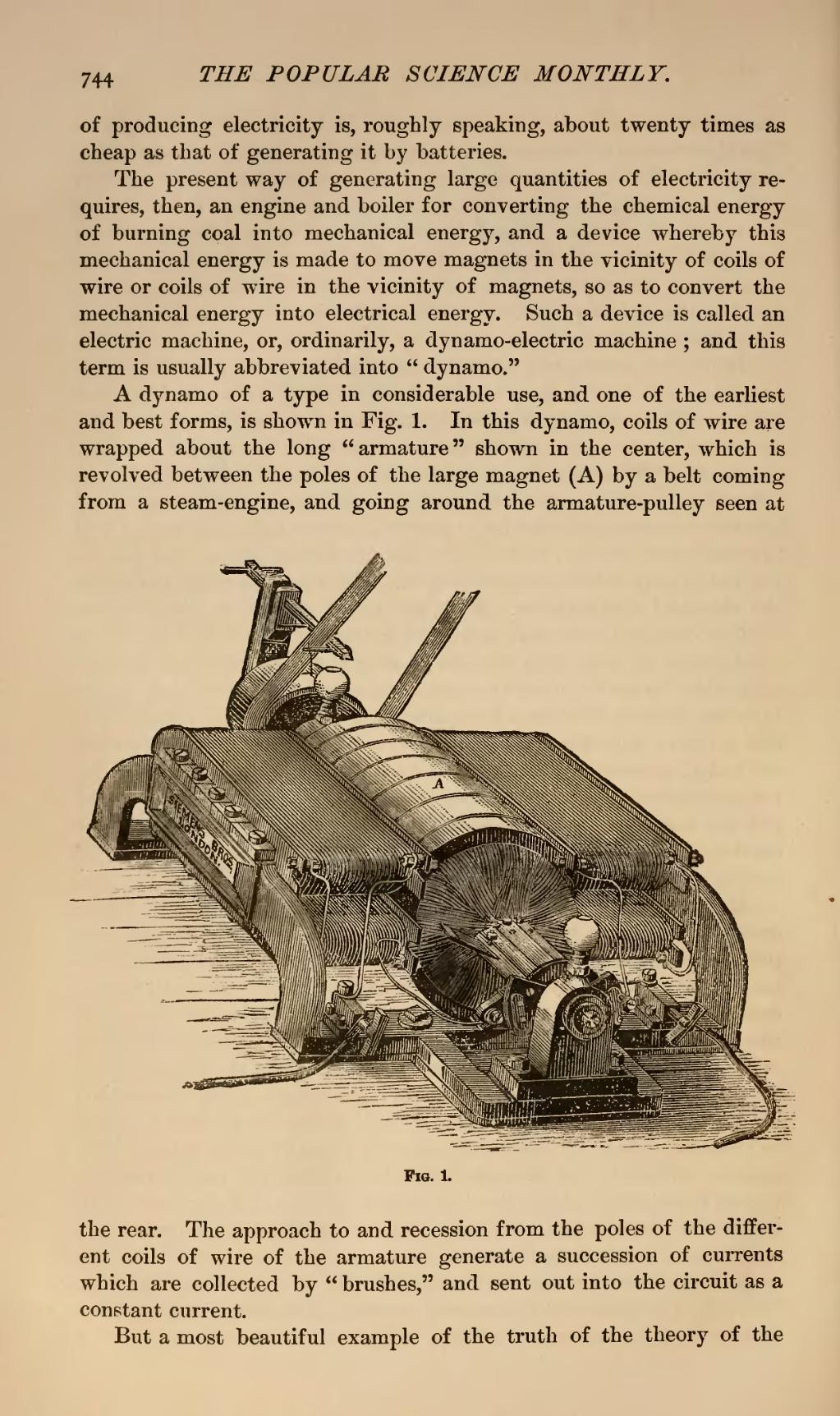of producing electricity is, roughly speaking, about twenty times as cheap as that of generating it by batteries.
The present way of generating large quantities of electricity requires, then, an engine and boiler for converting the chemical energy of burning coal into mechanical energy, and a device whereby this mechanical energy is made to move magnets in the vicinity of coils of wire or coils of wire in the vicinity of magnets, so as to convert the mechanical energy into electrical energy. Such a device is called an electric machine, or, ordinarily, a dynamo-electric machine; and this term is usually abbreviated into "dynamo."
A dynamo of a type in considerable use, and one of the earliest and best forms, is shown in Fig. 1. In this dynamo, coils of wire are wrapped about the long "armature" shown in the center, which is revolved between the poles of the large magnet (A) by a belt coming from a steam-engine, and going around the armature-pulley seen at

Fig. 1.
the rear. The approach to and recession from the poles of the different coils of wire of the armature generate a succession of currents which are collected by "brushes," and sent out into the circuit as a constant current.
But a most beautiful example of the truth of the theory of the

